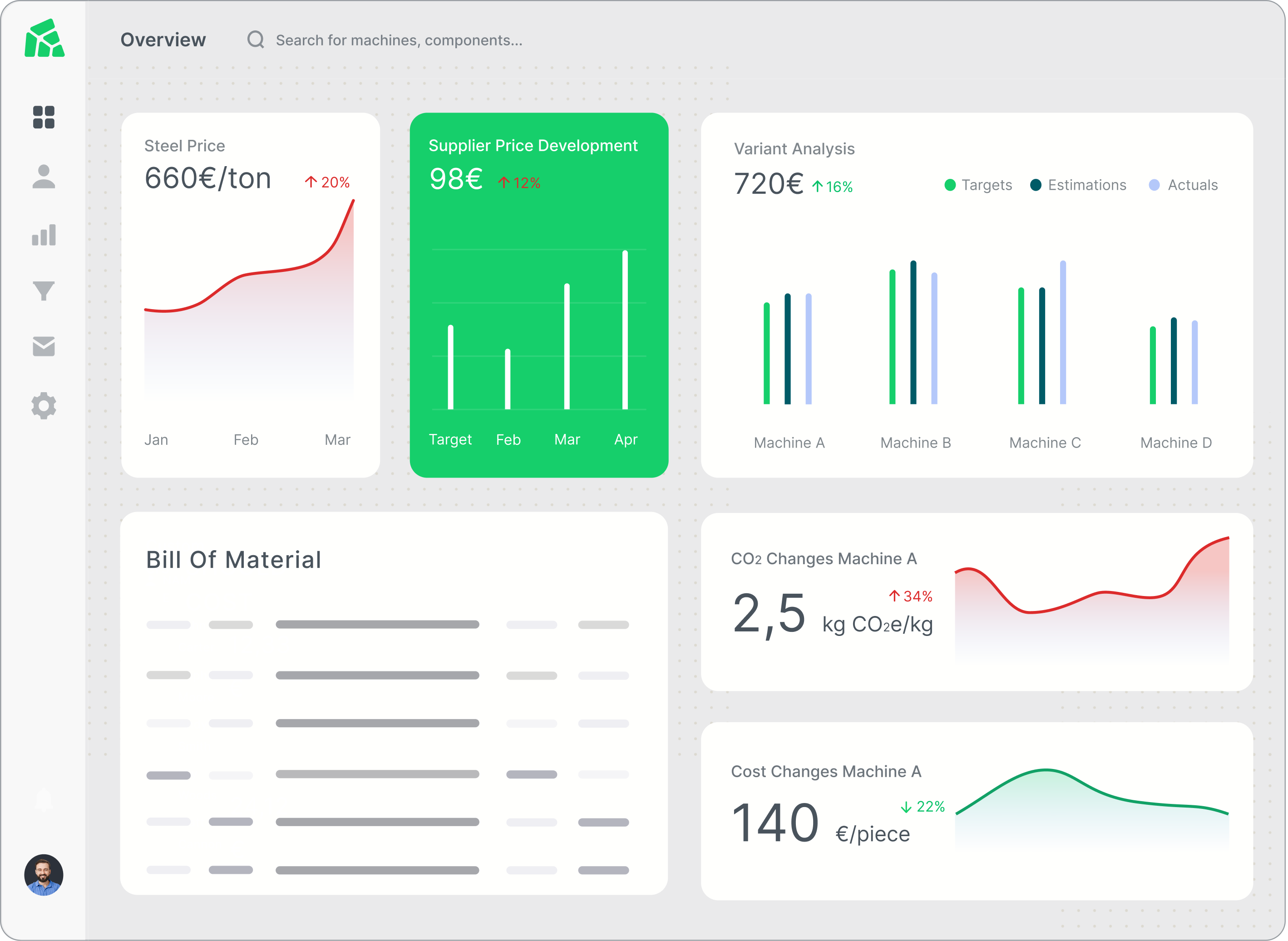News
June 26, 2025
What Is Product Lifecycle Costing – And Why It’s Critical for Cost Excellence
Discover what Product Lifecycle Costing (PLC) is, why it matters for cost excellence, and how to use it for smarter product development decisions.
In today’s competitive manufacturing landscape, reducing costs isn't just about smart engineering

In today’s fast-paced manufacturing landscape, successful product development requires more than just engineering brilliance. Effective cross-functional collaboration, bringing together teams from engineering, procurement, finance, product management, and others is critical to creating scalable, cost-efficient, and market-ready products. Without this collaboration, companies risk cost overruns, delays, and even product failure in competitive markets.
One of the most common challenges in product cost management is involving procurement too late in the development process. This can lead to several issues for manufacturing companies, such as:
"According to studies, involving procurement early in the process can reduce costs by up to 10% and increase supply chain resilience (McKinsey & Company), a crucial factor in leveraging product cost engineering optimal."
For a product to be technically sound, cost-efficient, and aligned with business goals, collaboration across departments is key. Cross-functional teams integrate diverse expertise, ensuring that:
Involving finance and product management early in the process ensures that production costs are controlled and aligned with business forecasts, helping avoid costly delays or rework.
Despite the clear advantages, manufacturing companies often struggle with cross-functional collaboration due to:

Strong leadership is essential in fostering collaboration. By providing the right tools, clear goals, and open communication channels, leaders can ensure smooth collaboration across departments. This, in turn, promotes better product cost engineering, faster time to market, and higher cost efficiency throughout the product development process.
Cross-functional collaboration in product development offers a strategic advantage, especially for manufacturing companies focused on optimizing product cost management and reducing carbon footprints. By involving engineering, procurement, finance, and product management early, companies can reduce costs, improve time-to-market, and deliver products that meet both market demands and business objectives. Embracing this collaborative approach is key to thriving in today’s competitive landscape, where cost reduction and cost transparency are more important than ever.
By leveraging valuemize's advanced solutions, manufacturing companies can achieve full cost transparency, enhance cross-functional efficiency, and hit their product development targets through streamlined collaboration between procurement, engineering, and finance.
